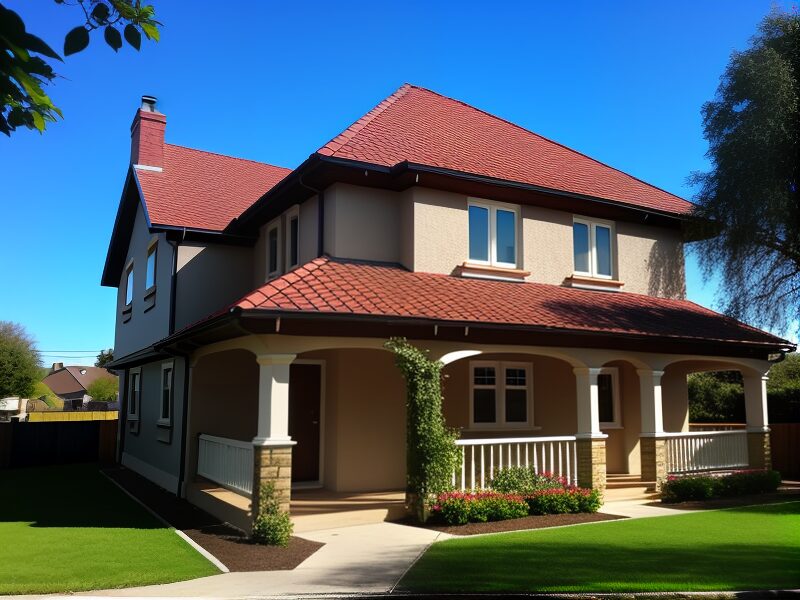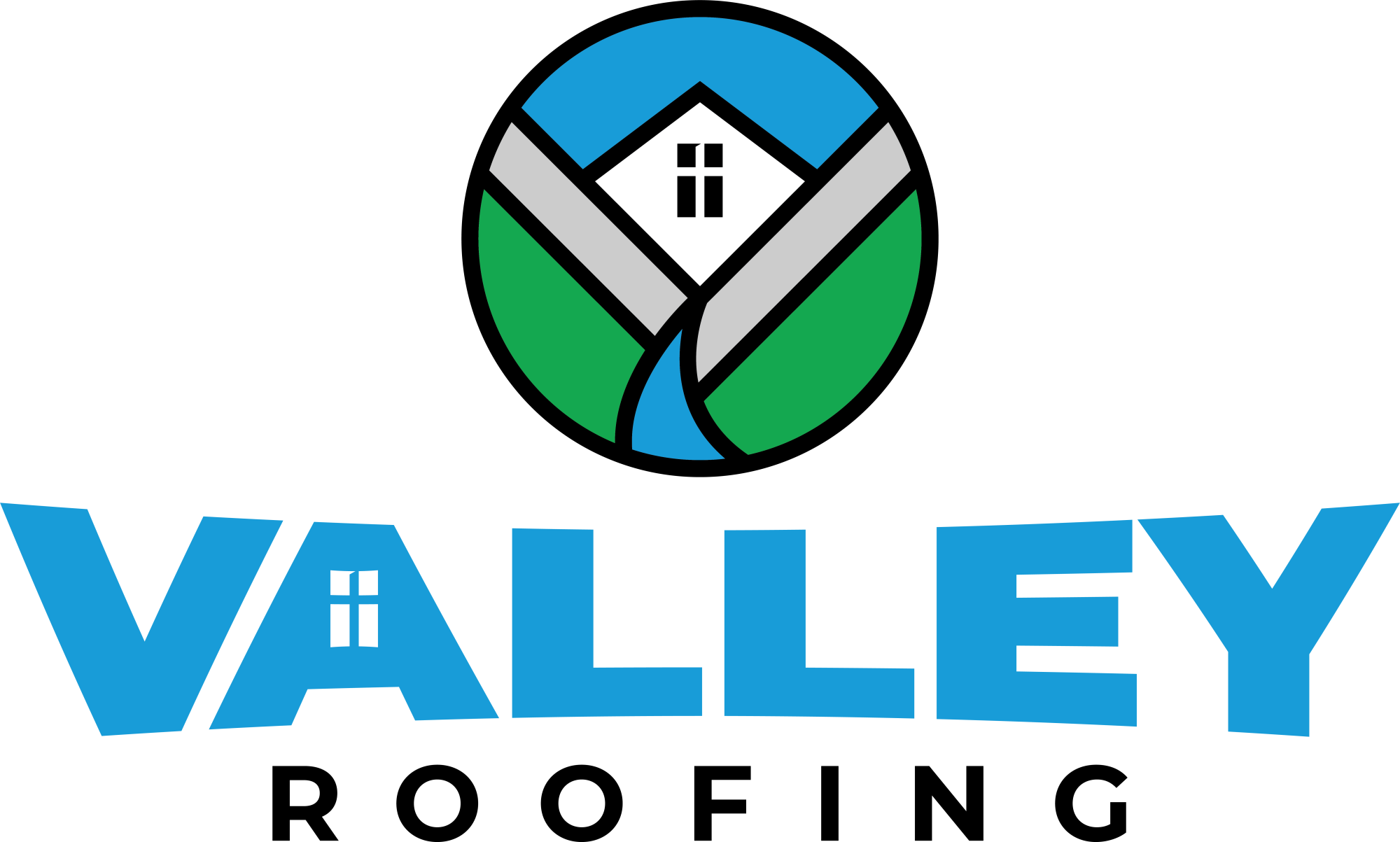How Roof Color Affects Energy Bills
When most people think about energy efficiency, they picture insulation, smart thermostats, or energy-efficient appliances. They’re not thinking about the color of their roof. But your roof color and energy bills are more connected than you might think.
In Oregon’s Willamette Valley, where summers can get toasty (and cooling costs add up quickly), the right roof color can make a noticeable difference in your home’s comfort and your wallet. Whether you’re replacing an old roof, building a new home, or just curious about your energy usage, understanding how roof color affects temperature regulation is a smart move.
Let’s break down how your roof color impacts heat absorption, what it means for energy efficiency, and how to choose the right color for your property.
The Science Behind Roof Color and Heat
Roof color is a significant factor in how much heat is absorbed and reflected. This concept boils down to solar reflectance, also known as albedo.
- Darker roof colors (like black, dark brown, or deep gray) absorb more heat from the sun. Think of it the same way as when you’re wearing a black shirt in the heat and how you get warmer easily and retain that heat.
- Lighter roof colors (white, light gray, beige, or light tan) reflect more sunlight, keeping the surface cooler. Using the same analogy as before, you will notice a difference between wearing a light-colored shirt vs a dark one.
A roof of lighter color can be up to 50–60°F cooler than a dark-colored roof on a hot summer day. That temperature difference has a direct effect on how hard your air conditioner has to work. This is especially prevalent in homes with poor attic ventilation or less insulation.
How Roof Color Affects Your Energy Bills
If your roof is absorbing heat all day long, that heat will eventually make its way into your home or commercial building. As a result, your HVAC system may need to work harder, and energy bills may be higher.
Here’s what we’ve seen:
Darker roofs can increase attic temperatures by up to 40°F during the summer months.
That trapped heat raises indoor temps, even with insulation, forcing your A/C to run more often.
Lighter roofs, especially those with reflective coatings or cool-roof technology, can reduce cooling costs by 10–30%.
In the Willamette Valley, where homes vary from shaded rural properties to sunny city lots, roof color is a low-maintenance way to increase energy efficiency. Even if you don’t have high summer temperatures every day, it still makes a measurable difference over time.
Pro tip: If you’re replacing your roof or building new, choosing a high-reflectance color now can lead to long-term energy savings.
Choosing the Right Roof Color for Your Home or Business
Picking a roof color is about looks and function, as well as location. Here are some key considerations to keep in mind when selecting a color that complements your structure and your climate.
1. Start With Your Roofing Material
Different materials reflect heat differently, even when they’re the same color.
- Asphalt shingles tend to absorb more heat unless you choose a “cool roof” shingle with reflective granules.
- Metal roofing is naturally more reflective, especially when coated with light-colored paint or finishes.
- PVC, TPO, or membrane roofing (for commercial buildings and flat roofs) often comes in white or light gray and reflects heat well.
📌 Related Read: Asphalt Shingles vs. Metal Roofing – What’s Right for Your Oregon Roof?
2. Match Color to Function
Here’s a quick guide to how common roof colors perform:
| Roof Color | Heat Absorption | Energy Efficiency |
| Black/Dark Gray | High | Low |
| Brown/Dark Green | Moderate-High | Moderate |
| Light Gray/Taupe | Moderate | Moderat-High |
| White/Cream | Very Low | High |
3. Think About the Bigger Picture
Color choice can also affect:
- Roof lifespan. Lighter roofs expand and contract less with heat.
- Algae resistance. Darker roofs, with their increased heat absorption, are more susceptible to algae growth because they thrive in warm environments.
- Home value and HOA compliance. Roof color can also impact both curb appeal and resale value.
Tip: Some brands now offer “cool roof” technology, which allows for darker colors to reflect more sunlight. Valley Roofing can help you determine if the brand you choose has this feature or guide you in selecting an option. Two brands we often recommend are Malarkey Roofing Products and CertainTeed. Both offer high-quality asphalt shingles that strike a balance between performance, value, and durability. They are excellent choices for homes in our region, and provide “cool roof” technology options.
What About Oregon’s Climate?
We get it. Oregon isn’t exactly Phoenix. So, does roof color matter that much in the Willamette Valley?
The answer is Yes, and here’s why:
- We still get hot summers, often in the 80s or 90s, for weeks at a time.
- Most homes in our region are insulated for warmth, not summer heat, which means trapped attic heat and higher energy bills.
- Many homes in Oregon are surrounded by trees. That natural shade helps, but it doesn’t eliminate the benefit of a reflective roof.
- Our roofs often endure moisture and moss growth, which can alter heat absorption over time.
- Choosing colors that stay cleaner or resist buildup can help preserve energy benefits.
Other Benefits of Lighter Roof Colors
While energy efficiency is the headline benefit, choosing a light or reflective roof can also improve:
Roof Longevity
Heat accelerates wear on shingles. As mentioned earlier, cooler roofs expand and contract less, which helps prevent cracking, curling, and granule loss.
Indoor Comfort
Homes with poor attic ventilation or no A/C? You’ll feel the heat more with a dark roof. Lighter roofs keep attic temperatures lower, which can improve comfort.
Lower HVAC Load
Even with modern HVAC systems, lowering the load on your system means less wear and tear and a longer lifespan for your unit.
Reduced Urban Heat Islands
For businesses or city buildings, reflective roofs contribute to lower local temperatures and a healthier environment.
Other Benefits of Lighter Roof Colors
While energy efficiency is the headline benefit, choosing a light or reflective roof can also improve:
Roof Longevity
Heat accelerates wear on shingles. As mentioned earlier, cooler roofs expand and contract less, which helps prevent cracking, curling, and granule loss.
Indoor Comfort
Homes with poor attic ventilation or no A/C? You’ll feel the heat more with a dark roof. Lighter roofs keep attic temperatures lower, which can improve comfort.
Lower HVAC Load
Even with modern HVAC systems, lowering the load on your system means less wear and tear and a longer lifespan for your unit.
Reduced Urban Heat Islands
For businesses or city buildings, reflective roofs contribute to lower local temperatures and a healthier environment.
Can I Change My Roof Color Without Replacing the Roof?
Yes! There are a few ways to improve the reflectivity of your existing roof without a full replacement:
- Cool roof coatings: Special paints or sealants can be applied to many roof types to boost reflectance.
- Shingle overlays: In some cases, reflective shingles can be layered over other shingles; however, we generally recommend a full replacement for optimal longevity.
- Metal roof repainting: A lighter or more reflective color can be applied to many metal roofs to reduce heat gain.
If your roof is nearing the end of its lifespan, a replacement is an excellent opportunity to enhance both aesthetics and energy performance by choosing a new color.
Roof Color Can Help You Save (More Than You Think)
Choosing the right roof color isn’t just a design decision; it’s a smart strategy for reducing heat buildup, lowering energy bills, and protecting your investment.
To recap:
- Dark roofs absorb more heat, increasing your cooling costs in the summer.
- Light-colored roofs reflect more sunlight, keeping your home or building cooler.
- Oregon’s warm summers and moisture-rich environment make reflective roofs a smart choice, especially when paired with durable materials like metal or cool shingles.
If you’re considering a new roof or want to improve your home’s energy efficiency, our team at Valley Roofing is here to help you find the right material, color, and solution for your needs.
📞 Ready to talk roof color, materials, or replacement? Contact Valley Roofing for a free estimate today!
What Our Clients Say
Carrie Corcoran
Keith I.


0 Comments